
How to Get Traffic to a Just-Launched Amazon Product
Table of Contents
So, you’ve poured your heart, soul, and a not-insignificant amount of capital into launching your new Amazon product. Exciting times! But then comes the silence. The deafening quiet of a listing lost in the digital ether, waiting for its first visitor, its first sale. If you’re staring at a flatline in your traffic reports, wondering how on earth you’re meant to kickstart momentum, you’re in precisely the right place. Getting those initial eyeballs onto your brand-new product page isn’t just important; it’s the lifeblood of your launch. Without traffic, there are no sales, no reviews, no climb up the search rankings. It’s a classic chicken-and-egg, isn’t it?
Many sellers I speak to feel this frustration acutely. They’ve done the hard work of product development and sourcing, only to feel like they’ve hit a brick wall. But here’s the good news: getting traffic to a new Amazon product is entirely achievable. It requires a strategic, multi-faceted approach, and a willingness to be proactive from day one. This isn’t about hoping for the best; it’s about making it happen. We’re going to explore the actionable strategies you can implement right now to turn that traffic trickle into a respectable flow, setting your product up for the success it deserves.
Laying the Groundwork: Your Listing is Your Shopfront
Before you even think about spending a penny on ads or driving external traffic, ask yourself: is your listing truly ready for visitors? It sounds obvious, I know, but you’d be amazed how many sellers fall at this first hurdle. Your product listing isn’t just a placeholder; it’s your digital salesperson, your packaging, and your shop window all rolled into one. If it’s not compelling, if it doesn’t convert, any traffic you send its way is simply wasted.
Optimise for Search AND Conversion:
- Keyword Research is King (and Queen, and the entire Royal Court): You need to know what terms your ideal customers are typing into Amazon’s search bar. Don’t guess. Use reputable keyword research tools (Helium 10, Jungle Scout, MerchantWords – take your pick) and delve deep. Look for relevant, high-volume keywords, but also don’t neglect those longer-tail keywords that can indicate strong purchase intent. Think like your customer. What problem does your product solve for them? Use their language.
- Compelling Title: Your title is prime real estate. It needs to include your main keywords naturally, but also entice a click. Make it clear, concise, and benefit-driven.
- Benefit-Led Bullet Points: These aren’t just for listing features. Each bullet point should scream a benefit. How does that feature make your customer’s life better, easier, or more enjoyable? Use all five bullet points and make them count.
- Persuasive Description: Here’s your chance to tell a story, overcome objections, and reinforce your value proposition. Break up text, use bolding for emphasis, and make it scannable.
- High-Quality Imagery & Video: In an online world, your images are your product. Invest in professional photography. Show your product from all angles, in use, and highlight key features. A+ Content (if you’re Brand Registered – and you should be aiming for this) takes this even further, allowing for a richer, more engaging brand story right on your listing. It’s a game-changer for conversion.
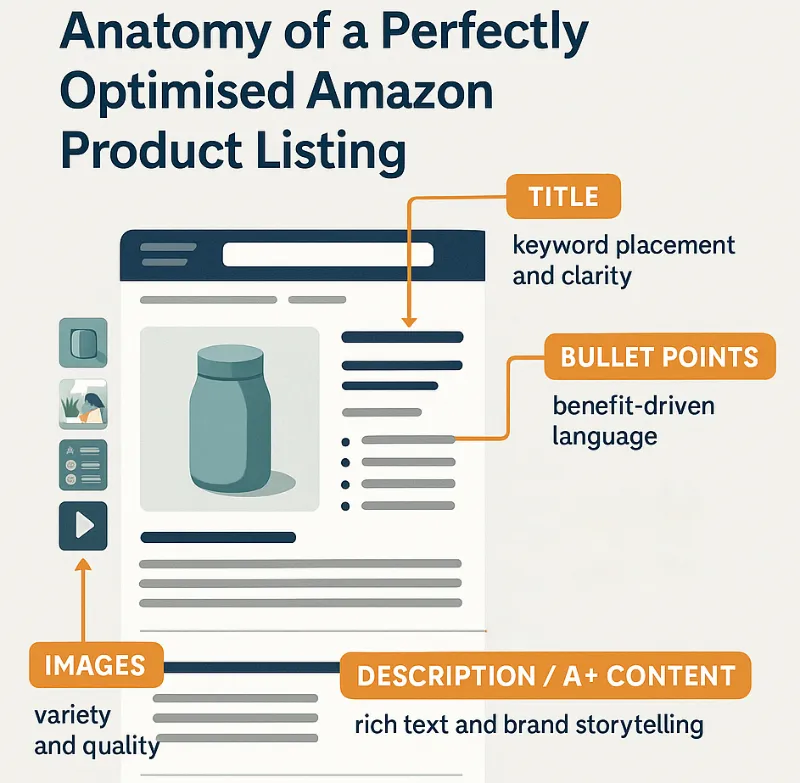
Igniting the Fire: Amazon PPC from Day One
Organic traffic is wonderful, the holy grail even. But for a new product with no sales history and no reviews? Waiting for organic traffic is like waiting for rain in a desert. You need to be proactive, and that means Amazon Pay-Per-Click (PPC).
I often hear sellers say, “I’ll wait for some organic sales, then start PPC.” Frankly, that’s putting the cart before the horse. For a new product, PPC is not just an advertising tool; it’s a launch tool. It provides immediate visibility, drives your first crucial sales, and helps Amazon’s algorithm understand what your product is all about.
Your Initial PPC Campaign Structure:
- Start with Sponsored Products: These are the most common ad type and appear directly in search results and on product pages.
- Automatic Campaigns: Let Amazon do some of the initial heavy lifting. They’ll match your product to customer search terms they deem relevant. This is an excellent way to harvest new, unexpected keywords you might have missed in your manual research. Keep a close eye on the Search Term Report and pluck out the high-performers (and negate the irrelevant ones!).
- Manual Campaigns (Broad, Phrase, Exact Match): Don’t rely solely on automatic. Set up manual campaigns targeting the keywords you identified in your research. Start with broader matches to gather data, then refine to phrase and exact as you see what converts.
- Broad Match: Gives Amazon more leeway to match your ad to a wider range of searches. Good for discovery, but can attract irrelevant clicks if not managed.
- Phrase Match: Your ad shows for searches that include your exact phrase, or close variations.
- Exact Match: Your ad only shows for searches that exactly match your keyword. Highest relevance, often highest conversion, but lower volume.
Bidding Strategies for Launch:
For a new product, your initial goal isn’t necessarily ACoS (Advertising Cost of Sale) efficiency. It’s visibility and sales velocity. You might need to bid more aggressively than you would for an established product. Consider ‘Dynamic bids - up and down’ or even fixed bids initially to ensure your ads are getting impressions.
Table 1: Comparing Automatic vs. Manual Campaigns for Launch
| Feature | Automatic Campaign | Manual Campaign (Sponsored Products) |
|---|---|---|
| Control | Lower (Amazon matches keywords) | Higher (You select keywords & match types) |
| Keyword Source | Amazon’s algorithm, Search Term Report | Your own research |
| Initial Goal | Keyword discovery, broad visibility | Targeted visibility, testing known terms |
| Effort | Lower setup, ongoing optimisation needed | Higher setup, ongoing optimisation needed |
| Best For | New products, finding new keywords | Known relevant keywords, precise targeting |
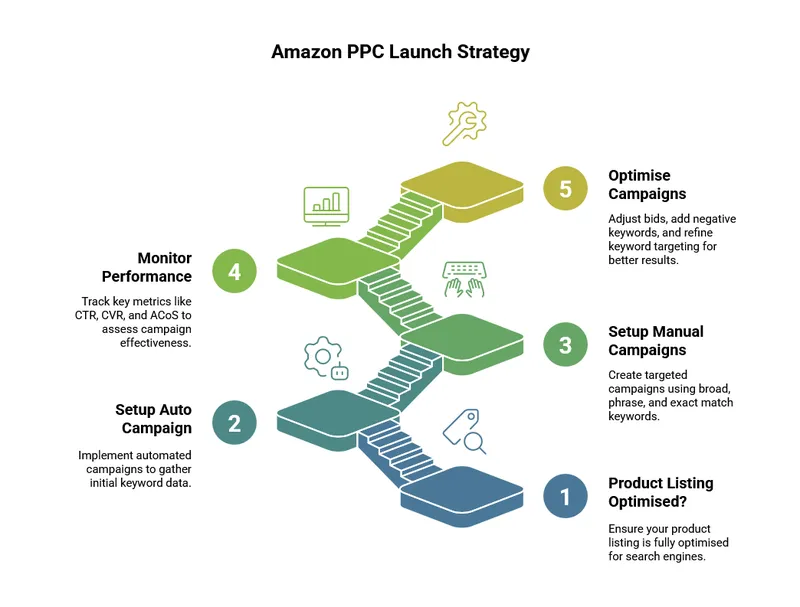
Sweeten the Deal: Promotions & Vouchers
Everyone loves a good deal, right? For a new product, promotions and vouchers can be powerful psychological triggers to encourage those first few, crucial sales. Those initial sales don’t just bring in revenue; they influence your Best Seller Rank (BSR) and, importantly, open the door for early reviews.
- Percentage Off: A straightforward discount (e.g., “15% off for the first 2 weeks!”). This can be very effective at grabbing attention.
- Vouchers (Coupons): These appear as little orange tags on the search results page and your product page. They are highly visible and can significantly improve your Click-Through Rate (CTR).
Don’t run them indefinitely. Use them strategically for your launch period (say, the first 2-4 weeks) to build that initial momentum. The cost of the discount can be thought of as a marketing investment, similar to your PPC spend. Remember, a slightly lower margin on your first 50-100 sales is a small price to pay if it helps your product get established and start ranking organically.
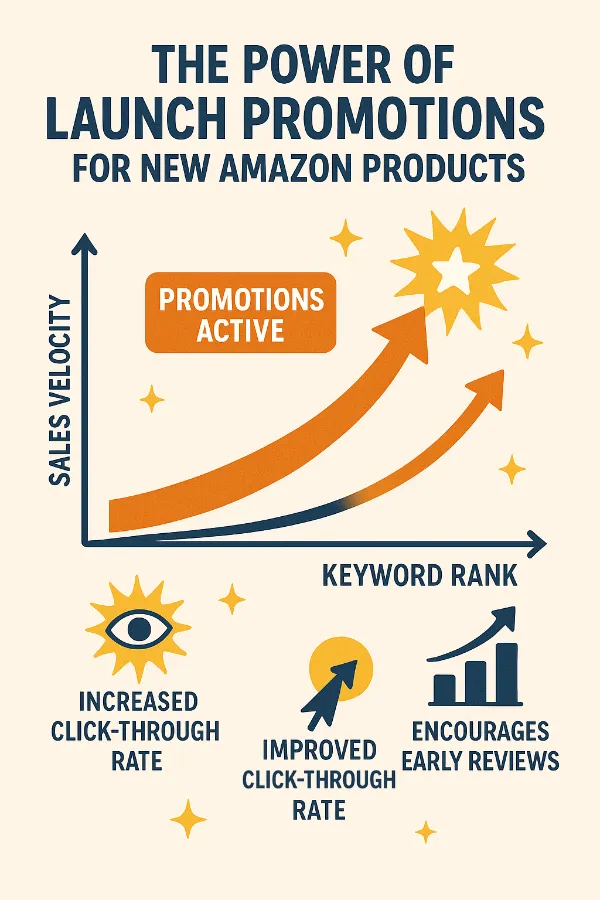
Beyond Amazon’s Walls: Driving External Traffic (With Caution)
Driving traffic from outside Amazon (e.g., social media, your email list, influencer collaborations) can be a tempting proposition. And it can work. However, for a brand-new product, you need to tread carefully.
The Pros:
- Access to a different audience.
- Potential for buzz and brand building.
- Can drive highly qualified, motivated buyers.
The Cons (especially for new listings):
- Conversion is Key: If your Amazon listing isn’t yet fully optimised and proven to convert, sending external traffic can be like pouring water into a leaky bucket. Amazon heavily weights conversion rate in its ranking algorithm. Lots of traffic with few sales can actually harm your listing.
- Cost: External traffic campaigns can be expensive, especially if you’re paying influencers or running ads on platforms like Facebook or Google.
My advice? Focus first on optimising your listing and getting your Amazon PPC campaigns dialled in. Once you have some sales data and you’re confident your listing converts well, then start experimenting with external traffic. And when you do, use Amazon Attribution. This programme allows you to create special tracking URLs so you can see exactly which external sources are driving sales. This data is gold.
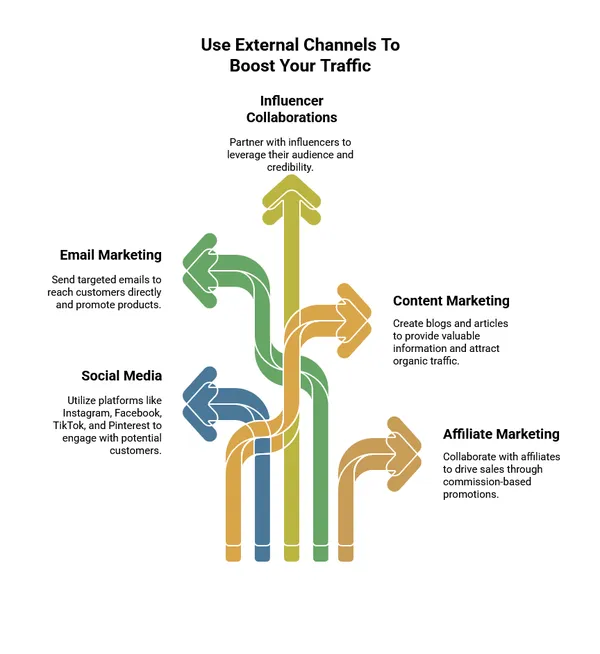
The Social Proof Engine: Encouraging Early Reviews
Reviews are the bedrock of trust on Amazon. How often do you buy a product with zero reviews, or overwhelmingly negative ones? Rarely, I’d wager. For a new product, getting those first few legitimate reviews is a massive hurdle, but absolutely critical for building shopper confidence and improving conversion rates.
How to Get Those First Reviews (Ethically!):
- Amazon Vine Program: If you are Brand Registered, Vine is an excellent option. Amazon invites trusted reviewers (Vine Voices) to receive your product for free in exchange for an honest review. These reviews are clearly marked as Vine Voice reviews, adding to their credibility. It costs to enrol a product, but for those crucial early reviews, it can be worth its weight in gold.
- ‘Request a Review’ Button: Within Seller Central, on the order details page, there’s a button that allows you to send a standardised review request to customers (once per order, between 5-30 days after delivery). Use it! It’s compliant with Amazon’s terms of service and can prompt those happy customers who might not have otherwise thought to leave a review.
- Exceptional Product & Customer Service: This should go without saying. A brilliant product and a great customer experience are the most natural ways to earn positive reviews. If a customer has an issue, deal with it promptly and professionally.
What NOT to do: Never, ever incentivise reviews, buy fake reviews, or manipulate the review system in any way. Amazon is incredibly sophisticated at detecting this, and the penalties can be severe – from listing suspension to account termination. It’s simply not worth the risk.
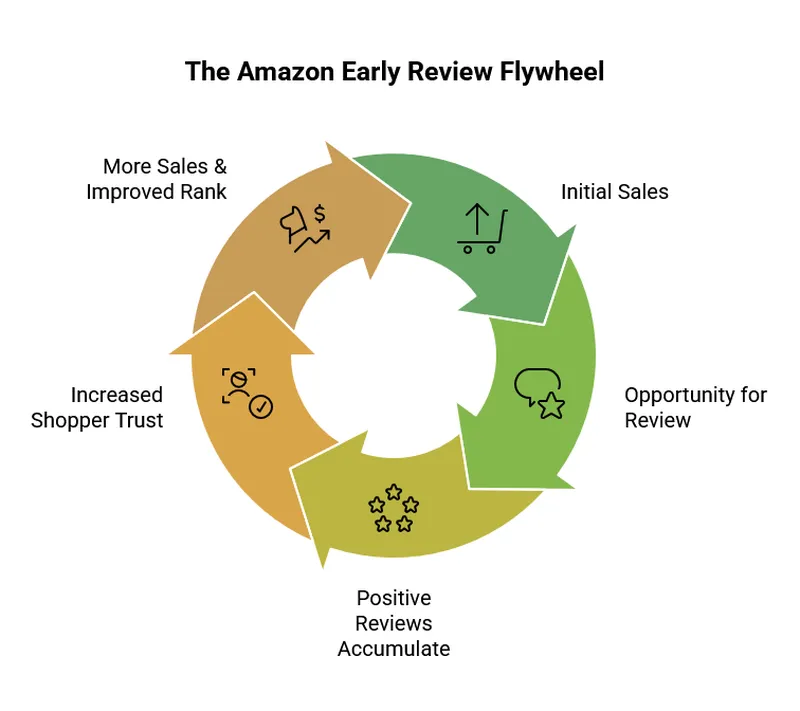
The Long Game: Monitor, Analyse, Adapt
Launching a product on Amazon isn’t a ‘set it and forget it’ affair. Driving traffic and building sales is an ongoing process of monitoring your performance, analysing the data, and adapting your strategy. What works today might not work tomorrow, and what works for one product might not work for another.
Key Metrics to Keep Your Eye On:
- Impressions: Are your ads and listings actually being seen?
- Click-Through Rate (CTR): Of those who see your ad/listing, what percentage are clicking? A low CTR might indicate issues with your main image, title, price, or review count.
- Conversion Rate (CVR): Of those who click, what percentage are buying? A low CVR points to problems with your listing content, price, or lack of reviews.
- ACoS (Advertising Cost of Sale) & TACoS (Total Advertising Cost of Sale): How much are you spending on ads relative to the sales they generate? TACoS gives you a broader view by including organic sales too.
- Keyword Ranking: Where do your important keywords rank in search? Track this regularly.
Don’t be afraid to experiment. Test different keyword strategies, ad copy, bidding approaches, and even pricing (within reason). The Amazon marketplace is dynamic, and your ability to adapt will be a key determinant of your long-term success.
It’s a Marathon, Not a Sprint
Getting traffic to your just-launched Amazon product requires a concerted effort across multiple fronts. There’s no single magic bullet. It’s about building a solid foundation with an optimised listing, kickstarting visibility with smart PPC, enticing early sales with promotions, carefully nurturing reviews, and then relentlessly monitoring and optimising.
It can feel like a lot, especially when you’re just starting out with a new product. But remember, every successful product on Amazon started with zero sales and zero reviews. Your journey is just beginning. Focus on these strategies, stay persistent, and you’ll give your product the very best chance to not just survive, but to thrive in the competitive Amazon marketplace. You’ve got this.